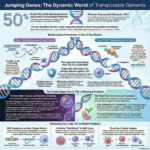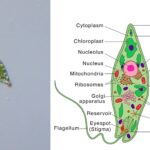Bacteriology 2 Views 1 Answers
Sourav PanLv 9December 7, 2024
Which of the following does NOT occur during bacterial conjugation? A. Direct contact between donor and recipient cells B. Shortening of the pilus C. Enzymatic cleavage of one strand at the origin of transfer D. Unidirectional transfer of both DNA strands E. Recipient cell becomes a donor cell after conjugation
Which of the following does NOT occur during bacterial conjugation? A. Direct contact between donor and recipient cells B. Shortening of the pilus C. Enzymatic cleavage of one strand at the origin of transfer D. Unidirectional transfer of both DNA strands E. Recipient cell becomes a donor cell after conjugation
Please login to save the post
Please login to submit an answer.
Sourav PanLv 9May 15, 2025
The correct answer is D. Unidirectional transfer of both DNA strands.
During bacterial conjugation, only one DNA strand (the “transfer strand”) is typically transferred from the donor to the recipient. The other strand remains in the donor cell and is replicated to form a complete double-stranded DNA molecule. Therefore, both strands are not transferred.
Here’s a brief breakdown of the other options:
- A. Direct contact between donor and recipient cells: This is a fundamental part of conjugation, as the donor and recipient cells must physically connect through a pilus.
- B. Shortening of the pilus: After the initial contact, the pilus contracts to bring the cells closer together for DNA transfer.
- C. Enzymatic cleavage of one strand at the origin of transfer: This step is necessary for the initiation of DNA transfer. The enzyme nicking the DNA strand is crucial for the transfer process.
- E. Recipient cell becomes a donor cell after conjugation: After receiving the transferred DNA, the recipient cell may acquire the plasmid or DNA that allows it to become a donor in future conjugation events.
0
0 likes
- Share on Facebook
- Share on Twitter
- Share on LinkedIn
0 found this helpful out of 0 votes
Helpful: 0%
Helpful: 0%
Was this page helpful?




